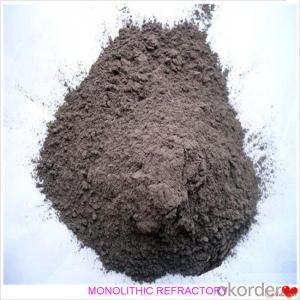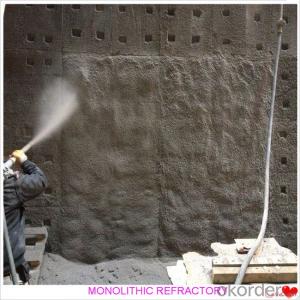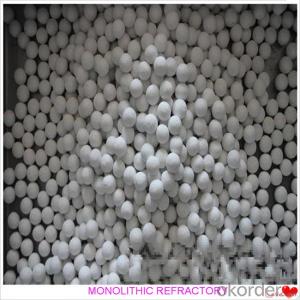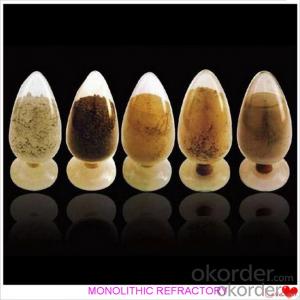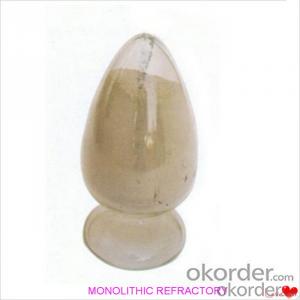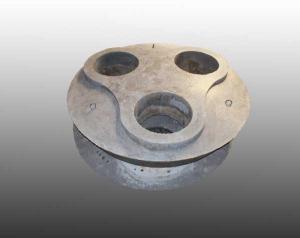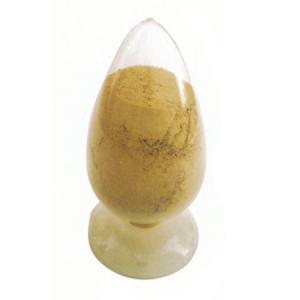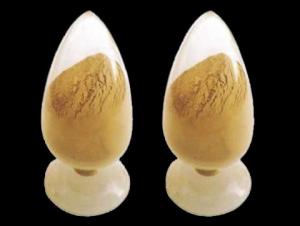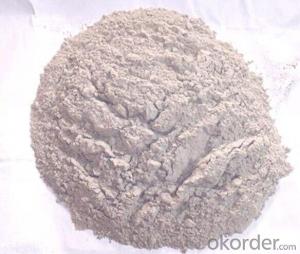Dense Castable For Fireplace and Industrial Furnace in Iron and Steel
- Loading Port:
- China main port
- Payment Terms:
- TT or LC
- Min Order Qty:
- 1000 kg
- Supply Capability:
- 3000000 kg/month
OKorder Service Pledge
OKorder Financial Service
You Might Also Like
Dense Castable for Fireplaces and Industrial Iron and Steel Furnaces
Product Description:
Dense castable is manufactured according to international standards. The product is famous for its excellent abrasion resistance and low thermal conductivity. Further, these can be provided in different specifications as required by clients. Castables use high purity raw materials and additives as the main material, and are made with superfine powder adding technology.
Product Features:
The material has excellent structural stability and air tightness, and has high physical and chemical properties, and also excellent working ability. If should be used with the same material products.
Product Applications:
Widely used in various kiln linings, such as boilers, blast furnace hot blast stoves, heating furnaces, ceramic kilns, heat treatment furnaces, incinerators, re-circulating fluidized bed furnaces and chemical industry and construction industry furnaces.
Product Specifications:
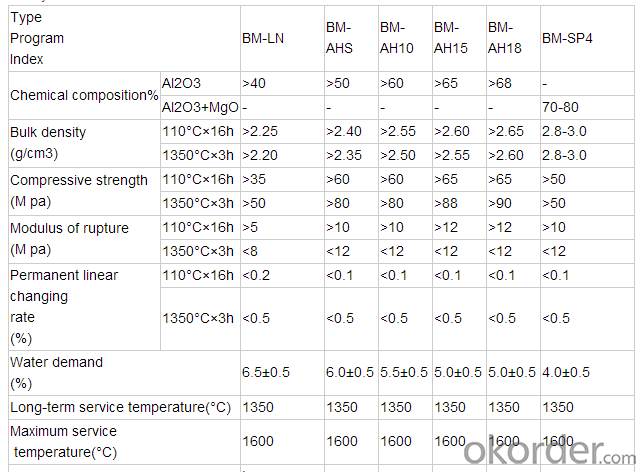
Product Images:
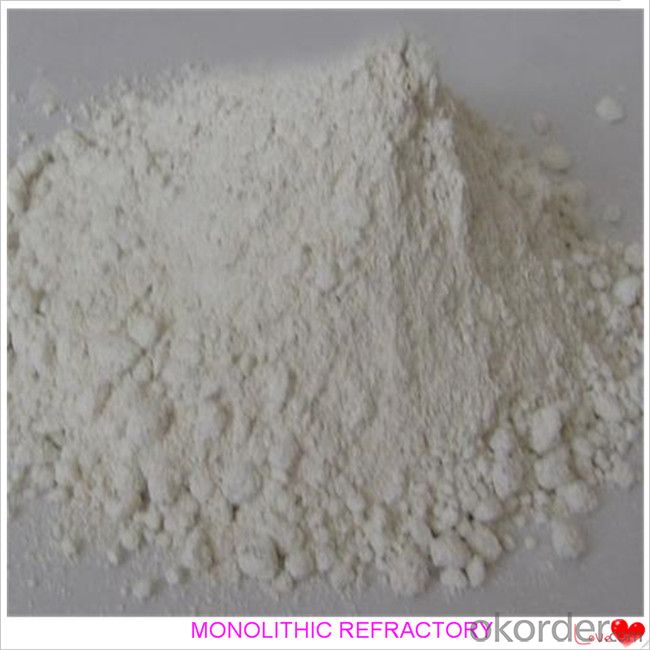
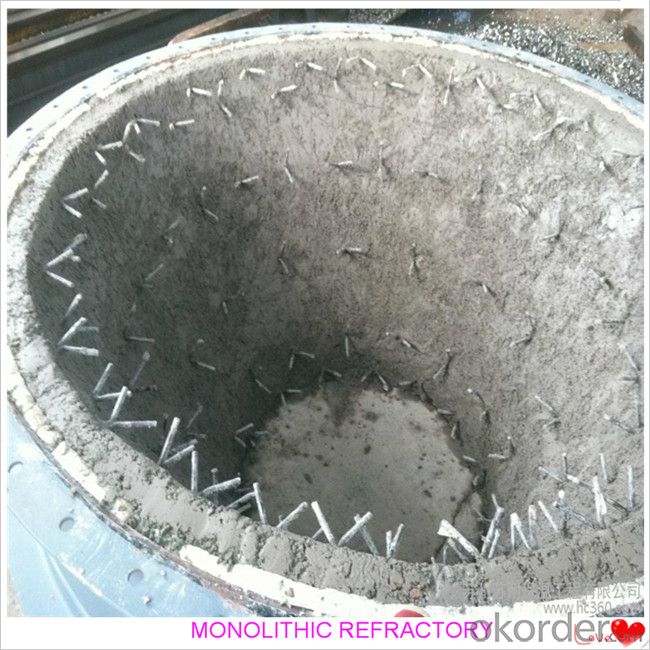
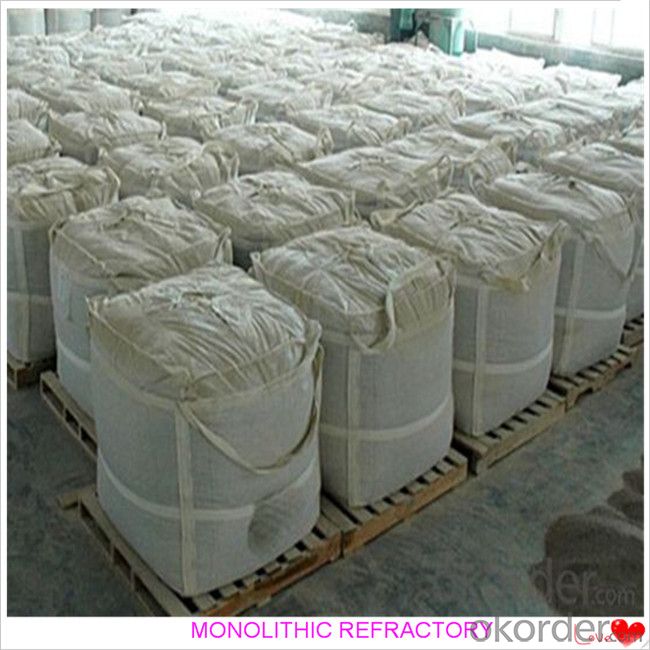
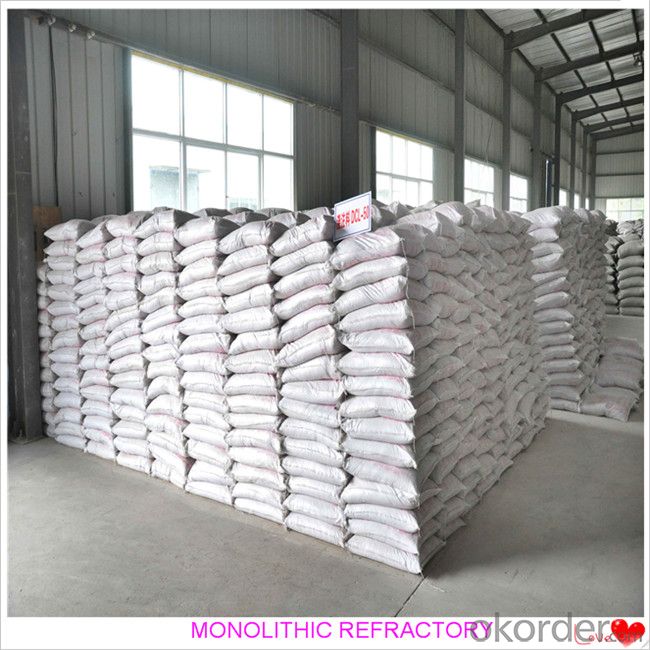
FAQ:
Q1: Why buy Materials & Equipment from OKorder.com?
A1: All products offered by OKorder.com are carefully selected from China's most reliable manufacturing enterprises. Through its ISO certifications, OKorder.com adheres to the highest standards and a commitment to supply chain safety and customer satisfaction.
Q2: How do we guarantee the quality of our products?
A2: We have established an advanced quality management system which conducts strict quality tests at every step, from raw materials to the final product. At the same time, we provide extensive follow-up service assurances as required.
- Q:What are the advantages of using insulating castables in the iron and steel industry?
- The advantages of using insulating castables in the iron and steel industry are numerous. Firstly, insulating castables have excellent thermal insulation properties, which help to reduce heat loss during the manufacturing process. This leads to increased energy efficiency and cost savings for the industry. Additionally, insulating castables have a low thermal conductivity, meaning they can withstand high temperatures without transferring excessive heat. This is crucial in the iron and steel industry, where temperatures can reach extremely high levels. By using insulating castables, the industry can ensure the longevity and durability of its equipment and structures. Furthermore, insulating castables have good resistance to thermal shock, meaning they can withstand rapid temperature changes without cracking or breaking. This is particularly beneficial in the iron and steel industry, where the heating and cooling processes are frequent and intense. Lastly, insulating castables have a low density, making them lightweight and easier to handle and install. This not only saves time and effort during installation but also reduces the structural load on equipment and structures. Overall, the use of insulating castables in the iron and steel industry offers advantages such as improved energy efficiency, enhanced durability, resistance to thermal shock, and ease of installation.
- Q:What are the cost implications of using monolithic refractories in the iron and steel industry?
- The use of monolithic refractories in the iron and steel industry can have various cost implications. Firstly, the initial cost of monolithic refractories tends to be higher compared to traditional brick refractories. Monolithic refractories are typically made from high-quality raw materials and require specialized installation techniques, leading to higher upfront expenses. However, these higher upfront costs can be offset by the benefits provided by monolithic refractories in terms of performance, durability, and reduced maintenance requirements. One of the major cost implications of using monolithic refractories is their extended service life. Monolithic refractories have excellent thermal shock resistance and can withstand high temperatures, mechanical stress, and corrosive environments. This results in reduced downtime and fewer replacement or repair needs, leading to overall cost savings in the long run. Additionally, monolithic refractories offer flexibility in design and application. They can be easily shaped and installed to fit complex geometries, resulting in optimized furnace linings and improved energy efficiency. By minimizing heat loss, monolithic refractories can reduce fuel consumption and lower energy costs for the iron and steel industry. Furthermore, the installation and maintenance of monolithic refractories can be less labor-intensive compared to brick refractories. This can result in reduced labor costs and shorter installation time, leading to potential cost savings for the industry. Another cost implication of using monolithic refractories is their impact on productivity. Monolithic refractories provide improved thermal insulation, reduced slag adhesion, and enhanced resistance to wear and erosion. These properties can lead to increased production rates, improved product quality, and minimized process interruptions, ultimately translating into higher profitability for iron and steel manufacturers. It is important to note that the cost implications of using monolithic refractories can vary depending on the specific application, furnace type, and operating conditions. Therefore, a thorough cost-benefit analysis should be conducted to evaluate the overall economic impact of implementing monolithic refractories in the iron and steel industry.
- Q:What are the common applications of monolithic refractories in blast furnaces?
- Monolithic refractories, also referred to as unshaped refractories, find extensive use in blast furnaces due to their advantageous properties and versatile applications. Blast furnaces benefit from the following common applications of monolithic refractories: 1. Furnace lining: The walls, hearth, and roof of blast furnaces are lined with monolithic refractories. These refractories possess high thermal resistance and excellent insulating properties, safeguarding the furnace structure against extreme temperatures and thermal shocks. 2. Repair of tuyeres and tapholes: Tuyeres are nozzles that introduce air or fuel into the furnace, while tapholes are openings used for tapping molten iron or slag. Monolithic refractories are employed to repair and maintain these crucial components, as they can endure the high temperatures and chemical reactions taking place in these regions. 3. Hot repair and maintenance: The demanding operating conditions of blast furnaces necessitate frequent repairs and maintenance. Monolithic refractories are utilized for hot repair and maintenance purposes, as they can be easily applied in a plastic or semi-plastic state to fill cracks, mend damaged areas, or replace worn-out linings. 4. Resistance to erosion and corrosion: Blast furnace environments are highly corrosive due to the presence of molten iron, slag, and other molten materials. Monolithic refractories with exceptional erosion and corrosion resistance protect the furnace lining against chemical attacks, extending its lifespan. 5. Gunning mixes: Gunning mixes are extensively employed in blast furnaces for their ability to be sprayed or gunned onto the refractory lining. These mixes comprise fine refractory aggregates, bonding agents, and additives. They are applied to repair worn-out areas, seal cracks, and provide a protective layer against erosion and slag penetration. 6. Repair of slag line and iron runners: The slag line and iron runners in blast furnaces are prone to erosion and wear due to the corrosive nature of molten slag and iron. Monolithic refractories are utilized to repair and reconstruct these areas, ensuring smooth and efficient furnace operation. To summarize, monolithic refractories play a vital role in blast furnaces, fulfilling numerous functions such as furnace lining, tuyere and taphole repair, hot repair and maintenance, erosion and corrosion resistance, gunning mixes, and repair of slag line and iron runners. Their ability to withstand high temperatures, chemical attacks, and mechanical stresses renders them indispensable in maintaining the integrity and efficiency of blast furnace operations.
- Q:What are the specific requirements of monolithic refractories for ladle transfer applications?
- Monolithic refractories used in ladle transfer applications have specific requirements to ensure their effectiveness and durability. These requirements are essential for maintaining the integrity of the ladle lining and preventing any issues during the transfer process. Firstly, monolithic refractories for ladle transfer applications must have excellent thermal shock resistance. Ladles are subjected to extreme temperature changes during the transfer process, and the refractories must be able to withstand rapid heating and cooling without cracking or spalling. This property helps to prevent any damage to the lining and maintains the structural integrity of the ladle. Secondly, ladle transfer applications require monolithic refractories with high resistance to chemical attack. Ladles often come into contact with various molten metals and slag, which can have corrosive properties. The refractories must be able to withstand these corrosive environments and maintain their physical and chemical properties over time. Another important requirement is good mechanical strength. Ladles can experience significant mechanical stress during the transfer process, including impacts and vibrations. Therefore, the monolithic refractories need to have sufficient strength to resist these mechanical forces and prevent any cracking or failure in the lining. Furthermore, ladle transfer applications often involve the use of fluxes and additives, which can have different physical properties. The refractories used must have compatibility with these fluxes and additives to ensure proper performance and avoid any adverse reactions that could affect the ladle's lining. Lastly, monolithic refractories for ladle transfer applications should have low porosity. Low porosity helps to minimize the penetration of molten metal and slag into the refractory lining, reducing the risk of erosion and extending the service life of the refractories. In summary, the specific requirements of monolithic refractories for ladle transfer applications include excellent thermal shock resistance, high resistance to chemical attack, good mechanical strength, compatibility with fluxes and additives, and low porosity. By meeting these requirements, the refractories can effectively withstand the harsh conditions of ladle transfer and ensure the longevity and performance of the ladle lining.
- Q:What are the main types of monolithic refractories used in the iron and steel industry?
- In the iron and steel industry, the primary monolithic refractories used consist of castables, ramming materials, gunning materials, and plastic refractories. Castables, a type of refractory material, can be poured or cast into different shapes and sizes. They're composed of refractory aggregates, binders, and additives. Castables are commonly utilized in ladles, tundishes, and blast furnaces due to their exceptional thermal shock resistance and high strength. Ramming materials, also known as ramming mixes, find application in lining furnace bottoms and other high-temperature settings. They typically comprise refractory aggregates and a bonding agent, allowing them to be compacted or rammed into place. Ramming materials exhibit good resistance to thermal cycling and can endure high temperatures. Gunning materials are specifically designed to be sprayed or gunned onto the refractory surface using a high-pressure gunning machine. They serve the purpose of repairing and patching damaged or eroded refractory linings. Gunning materials are typically comprised of refractory aggregates, binders, and additives. They provide excellent adhesion and are commonly employed in kilns, converters, and electric arc furnaces. Plastic refractories, a type of monolithic refractory, can be molded or formed into different shapes. They're composed of refractory aggregates, plasticizers, and binders. Plastic refractories are used to line various equipment and structures in the iron and steel industry, such as boilers, incinerators, and chimneys. They exhibit good resistance to thermal shock and can be easily installed manually or with a trowel. In summary, these various types of monolithic refractories play a vital role in the iron and steel industry by providing high-temperature resistance, thermal insulation, and durability to the equipment and structures utilized in the production process.
- Q:How do monolithic refractories contribute to the overall safety of iron and steel operations?
- The overall safety of iron and steel operations is greatly ensured by the crucial role played by monolithic refractories, which provide various important benefits. Firstly, these refractories are renowned for their exceptional thermal insulation properties, enabling them to effectively withstand extreme temperatures and prevent heat loss. This is particularly crucial in iron and steel operations where high temperatures are involved in processes like melting, casting, and heat treatment. By minimizing heat loss, monolithic refractories help maintain a stable temperature environment, thereby reducing accident risks and ensuring personnel safety. Secondly, monolithic refractories offer outstanding resistance to chemical attacks. In iron and steel operations, the presence of different chemicals and gases can corrode and deteriorate the linings of furnaces, ladles, and other equipment. By serving as a protective barrier, monolithic refractories prevent the penetration of these corrosive substances, prolonging the equipment's lifespan and minimizing the chances of failures or leaks that could pose safety hazards. Moreover, monolithic refractories are known for their structural integrity and high mechanical strength. In iron and steel operations, heavy loads and stresses are common, especially during the handling and movement of molten metal and raw materials. Monolithic refractories can withstand these stresses without cracking or collapsing, ensuring the equipment's structural stability and minimizing accidents or equipment failures. Additionally, monolithic refractories exhibit excellent thermal shock resistance. In iron and steel operations, sudden temperature changes can occur due to the introduction of cold materials or liquids into hot equipment. This thermal shock can cause cracking and spalling of the refractory lining, compromising the operation's safety and efficiency. With their ability to withstand thermal shock, monolithic refractories help minimize the risk of unexpected failures and maintain the operation's overall safety. In conclusion, monolithic refractories significantly contribute to the overall safety of iron and steel operations through their high thermal insulation, chemical resistance, structural integrity, and thermal shock resistance. By ensuring a stable temperature environment, protecting against chemical attacks, withstanding heavy loads, and resisting thermal shock, monolithic refractories help prevent accidents, equipment failures, and potential hazards, creating a safer working environment for personnel in the iron and steel industry.
- Q:How are monolithic refractories installed and repaired in iron and steel applications?
- To ensure optimal performance and longevity in iron and steel applications, specific procedures are employed for the installation and repair of monolithic refractories. The installation process typically involves the following steps: 1. Proper surface preparation is crucial. This entails removing loose material, dirt, and dust to create a smooth and clean substrate that facilitates good adherence of the refractory material. 2. The refractory material, supplied as dry powders or granules, is mixed with water or a specific bonding agent according to the manufacturer's instructions to achieve the desired properties. 3. The mixed refractory material is then applied to the prepared surface using techniques such as troweling, spraying, or casting, depending on the installation requirements and the type of monolithic refractory. 4. Curing is necessary to maximize the strength and durability of the refractory material. The curing process can involve air drying, heat treatment, or a combination of both, in accordance with the specific refractory material's recommendations. When it comes to repairing monolithic refractories in iron and steel applications, the following steps are generally followed: 1. Thorough assessment of the damaged area or component is conducted to determine the extent of the damage and the appropriate repair method. 2. The damaged monolithic refractory material is carefully removed using suitable tools and techniques while ensuring the underlying substrate remains intact. 3. Similar to the installation process, the surface where the repair will take place is cleaned and prepared by removing any loose material, dirt, and dust. 4. The repair material, typically the same or similar to the original monolithic refractory, is mixed and applied to the damaged area. The application method may vary depending on the nature of the repair and the specific requirements of the refractory material. 5. The repaired area is properly cured and inspected to ensure the quality and effectiveness of the repair, following the manufacturer's guidelines for curing and post-repair inspection procedures. In conclusion, the meticulous execution of surface preparation, proper mixing and application of refractory material, and appropriate curing procedures are essential for the installation and repair of monolithic refractories in iron and steel applications. These steps guarantee reliable and durable refractory linings, which are vital for the efficient operation of iron and steel processes.
- Q:How do monolithic refractories prevent slag penetration?
- Monolithic refractories prevent slag penetration through several mechanisms. Firstly, monolithic refractories are made up of high-quality materials that have excellent resistance to slag attack. These materials, such as alumina, silica, and magnesia, have a high melting point and can withstand the corrosive nature of the slag. Secondly, monolithic refractories are designed with a dense and compact structure that minimizes the porosity. Slag penetration occurs when the molten slag infiltrates the pores and cracks of the refractory material. By reducing the porosity, monolithic refractories create a barrier that restricts the entry of slag into the refractory lining. Additionally, monolithic refractories can be chemically bonded to the substrate, forming a strong and impermeable bond. This bond further enhances the resistance to slag penetration by preventing any gaps or weak points where the slag can penetrate. Moreover, monolithic refractories can be designed with a high thermal shock resistance. Slag penetration is often intensified by thermal cycling, where the refractory material undergoes rapid temperature changes. Monolithic refractories with high thermal shock resistance can withstand these temperature fluctuations without cracking or spalling, thus reducing the risk of slag penetration. Furthermore, the proper installation and maintenance of monolithic refractories play a crucial role in ensuring their effectiveness against slag penetration. The refractory lining needs to be properly designed, using appropriate thickness and geometry, to provide maximum protection against slag attack. Regular inspection and repair of any damaged or worn-out areas can also prevent slag penetration. In conclusion, monolithic refractories prevent slag penetration through their excellent resistance to slag attack, dense structure, chemical bonding, high thermal shock resistance, and proper installation and maintenance. These factors work together to create a strong and impermeable barrier that protects the underlying substrate from the corrosive effects of slag.
- Q:What are the factors affecting the thermal expansion of monolithic refractories?
- The thermal expansion of monolithic refractories is influenced by several factors. These factors include the chemical composition of the refractory material, particle size, temperature, thermal history, porosity, binder content, and thermal shock. 1. The thermal expansion of the refractory material is significantly influenced by its chemical composition. Different chemical elements and compounds have varying coefficients of thermal expansion. For instance, materials with high levels of silica generally have lower coefficients of thermal expansion compared to those with higher concentrations of alumina. 2. The particle size distribution of the refractory material can also impact its thermal expansion. Smaller particle sizes result in higher thermal expansion due to increased surface area and greater particle contact. 3. The temperature at which the monolithic refractory is exposed plays a crucial role in its thermal expansion. As the temperature increases, the particles gain more kinetic energy, leading to increased movement and expansion. Different refractory materials exhibit significant expansion within specific temperature ranges. 4. The thermal history of the refractory material, including its heating and cooling cycles, can influence its thermal expansion behavior. Repeated heating and cooling cycles can induce microstructural changes in the material, affecting its thermal expansion properties. 5. The porosity of the monolithic refractory also affects its thermal expansion. Higher porosity generally results in higher thermal expansion due to the presence of voids and gaps within the material. 6. The type and amount of binder used in monolithic refractories impact their thermal expansion. Different binders have different coefficients of thermal expansion, which can influence the overall expansion behavior of the material. 7. Rapid temperature changes, such as quenching or exposure to alternating heating and cooling, can cause thermal shock in the refractory material. This can lead to cracks, spalling, and changes in thermal expansion behavior. Understanding these factors is essential when selecting the appropriate monolithic refractory material for specific applications. The thermal expansion characteristics directly affect the performance and longevity of the refractory in high-temperature environments.
- Q:What are monolithic refractories and how are they used in the iron and steel industry?
- Monolithic refractories possess a unified and uninterrupted structure, distinguishing them as a distinct type of refractory material. Unlike traditional refractory bricks, which involve the firing of individual pieces in a kiln, monolithic refractories consist of a single, seamless mass. This characteristic grants them superior versatility in terms of shape and size, rendering them ideal for a plethora of iron and steel industry applications. The iron and steel industry widely employs monolithic refractories due to their exceptional thermal and mechanical properties. They find application in various areas, including the lining of furnaces, kilns, ladles, and tundishes. These refractories are engineered to endure extreme temperatures, chemical erosion, and mechanical strain, ensuring the continuous and efficient operation of the steelmaking process. One prominent utilization of monolithic refractories within the iron and steel industry pertains to the lining of blast furnaces. These furnaces are substantial, cylindrical structures utilized for the production of pig iron from iron ore. The lining of these furnaces encounters intense heat, chemical reactions, as well as the abrasive nature of iron ore and hot gases. Monolithic refractories, such as castables and gunning mixes, are employed to establish a robust lining that can withstand these harsh conditions. Another application involves the lining of ladles, which transport molten metal from the blast furnace to the steelmaking process. Monolithic refractories are used to line these ladles, protecting them from the corrosive impact of hot metal and slag. In this scenario, the ability to shape monolithic forms facilitates precise fitting and effortless installation. Monolithic refractories also play a crucial role in tundishes, vessels employed to evenly distribute molten metal into molds during continuous casting. The refractories utilized in tundishes must exhibit exceptional resistance to thermal shock and erosion to endure the high temperatures and abrasive nature of the molten metal. Monolithic refractories, such as ramming and patching mixes, are employed to mend and maintain the tundish lining. In summary, the iron and steel industry relies on monolithic refractories for their capacity to endure harsh conditions and provide enduring linings in various applications. By harnessing these advanced refractory materials, the industry can achieve heightened efficiency, reduced downtime, and enhanced productivity in the steelmaking process.
1. Manufacturer Overview |
|
|---|---|
| Location | |
| Year Established | |
| Annual Output Value | |
| Main Markets | |
| Company Certifications | |
2. Manufacturer Certificates |
|
|---|---|
| a) Certification Name | |
| Range | |
| Reference | |
| Validity Period | |
3. Manufacturer Capability |
|
|---|---|
| a)Trade Capacity | |
| Nearest Port | |
| Export Percentage | |
| No.of Employees in Trade Department | |
| Language Spoken: | |
| b)Factory Information | |
| Factory Size: | |
| No. of Production Lines | |
| Contract Manufacturing | |
| Product Price Range | |
Send your message to us
Dense Castable For Fireplace and Industrial Furnace in Iron and Steel
- Loading Port:
- China main port
- Payment Terms:
- TT or LC
- Min Order Qty:
- 1000 kg
- Supply Capability:
- 3000000 kg/month
OKorder Service Pledge
OKorder Financial Service
Similar products
New products
Hot products
Related keywords
